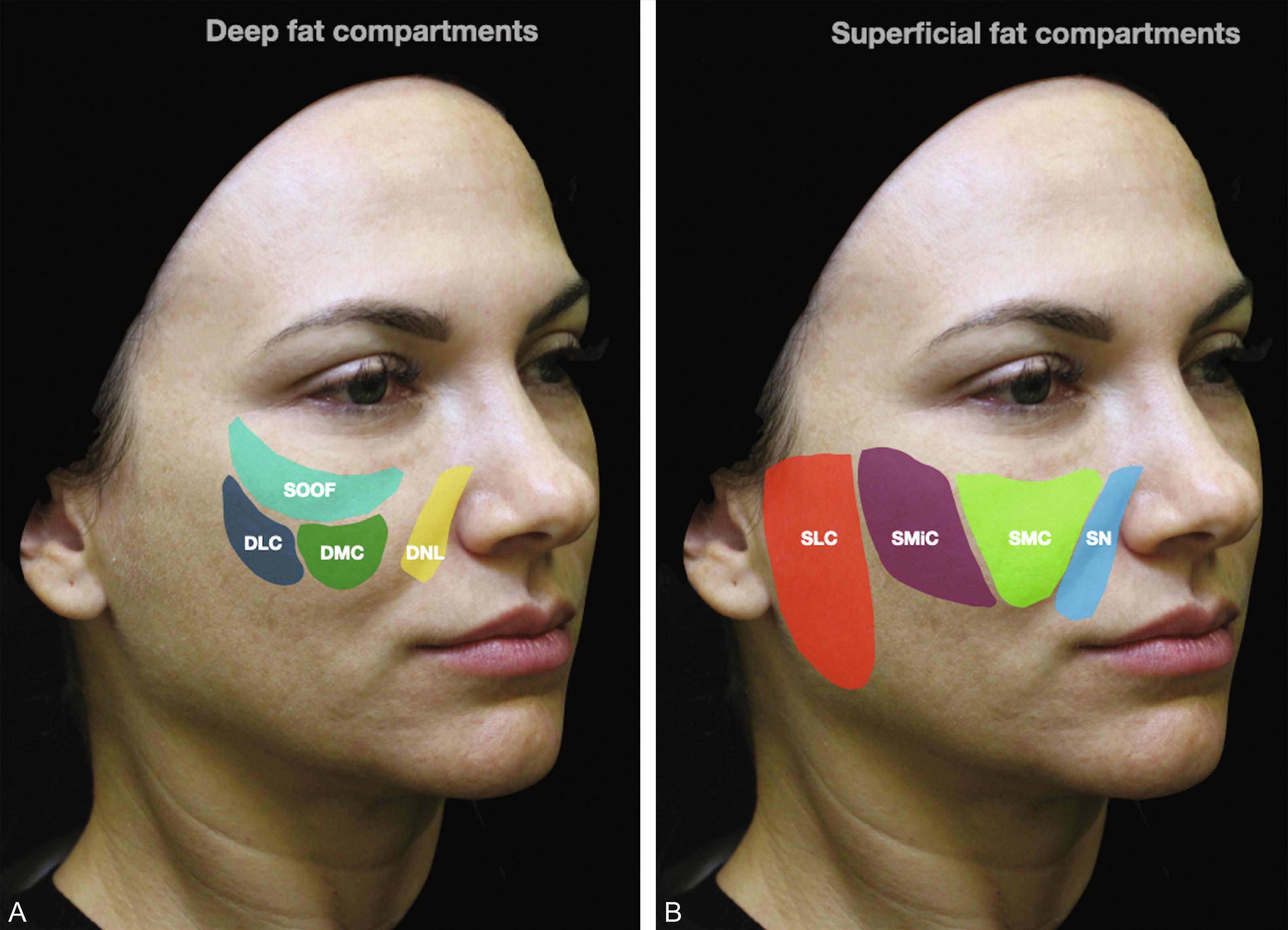Physical Address
304 North Cardinal St.
Dorchester Center, MA 02124
The midface is considered the region between the lower eyelid and the oral commissure.
A full, wide, and naturally projected midface is related to youth and beauty.
Similar to other facial areas, local aging encompasses bone, muscles, retaining ligaments, fat, and skin changes in a multifactorial process.
Structure and contour evaluation of the different facial shapes can be an important tool used in facial assessment determining which facial areas will be prioritized in restoration and/or volumization.
Biodegradable fillers and biostimulators are optimal choices for nonsurgical rejuvenation of the midface, due to their safety, effectiveness, reversibility and natural looking results.
Knowledge of facial anatomy, including bone prominences, fat compartments, mimetic muscles, and risk areas, is crucial to achieve better results and to avoid complications.
The midface is considered the area between the lower eyelid and the oral commissure.
A young and attractive face is characterized by a well-contoured and adequately covered zygomatic arch and a anteriorly projected cheek, with a smooth transition from and to the neighboring regions, e.g., no visible delimitation between the cheek and the lid, the nasolabial fold (NLF), and the jowls.
Due to anatomical, ultrasonographic, tomographic, and magnetic resonance imaging, the understanding of the midface aging process has evolved exponentially in the last decade. Similar to other facial areas, local aging encompass bone, muscles, retaining ligaments, fat and skin alterations in a multifactorial process. Individual genetics and/or anatomical features can influence how early or late the aging signs will be apparent.
Biodegradable hyaluronic acid (HA) fillers and biostimulators are optimal choices for nonsurgical rejuvenation of the midface, owing to their safety, effectiveness, reversibility, and natural-looking results.
In the midface, the maxillary bone is more flattened in men, giving less anterior projection to the face, and the zygomatic prominence is more angled. In females, on the other hand, the zygomatic prominence is rounder, and the maxillary bone is more projected. For both genders, with aging, the orbital floor and the pyriform aperture enlarge inferiorly and laterally, facilitating the descent of the midface.
The facial subcutaneous fat tissue is compartmentalized by septal boundaries in superficial and deep portions, separated by the superficial muscle aponeurotic system (SMAS) and also by the muscles of facial expression. In the midface, the deep fat compartments are deep nasolabial or pyriform fat compartment (DNL), deep medial and deep lateral cheek fat portions (DMC and DLC), as well as two portions located under the orbicularis oculi muscle (medial and lateral suborbicularis oculi fat [SOOF]) ( Fig. 21.1 A ). There are four superficial fat compartments: superficial nasolabial and the three malar portions: superficial medial cheek, superficial middle cheek, and superficial lateral cheek fat compartments ( Fig. 21.1 B). Volume replacement in the deep fat compartments results in structural support for midface rejuvenation.

Important retaining ligaments in the midface are the orbital retaining, the malar septum or zygomatic-cutaneous, and the MacGregor patch or zygomaticus.
A transverse facial septum attached to the underside of the zygomaticus major muscle was recently described, providing support for the deep medial and lateral cheek fat compartments. Contraction of the zygomaticus major muscle during smiling may “tense” this septum, promoting cranial shift of midfacial fat compartments, projecting the midface anteriorly.
The facial arteries run along the borders of the superficial fat compartments but are located deep to them. The facial artery is a main vessel that irrigates the midface directly or through derived branches, but several variations of its anatomic course have been described in recent papers.
Usually, it arises from the external carotid artery, crosses the lower border of the mandible anteriorly to the masseter muscle and then continues its way up laterally to the nose, sending some ramifications like the lower and the upper lip and the lateral nasal branches. From the mouth corner to the NLF, the facial artery, now called as angular artery , runs in the subcutaneous plane, above facial muscles. From there it courses superiorly and may anastomose with the dorsal nasal, the infraorbital and transverse facial arteries, connecting external and internal carotid systems.
Because of its location and anastomosis to other vessels, the angular artery is the vessel most likely to be compromised after filler injections to the midcheek, NLF, and periorbital area ( Fig. 21.2 ).
The angular artery is the vessel most likely to be compromised after filler injections to the midcheek, NLF, and periorbital area.

The sensitive innervation of the midcheek is done by the maxillary branch of the trigeminal nerve, while the motor innervation is performed by the temporal and zygomatic branches of the facial nerve.
Become a Clinical Tree membership for Full access and enjoy Unlimited articles
If you are a member. Log in here